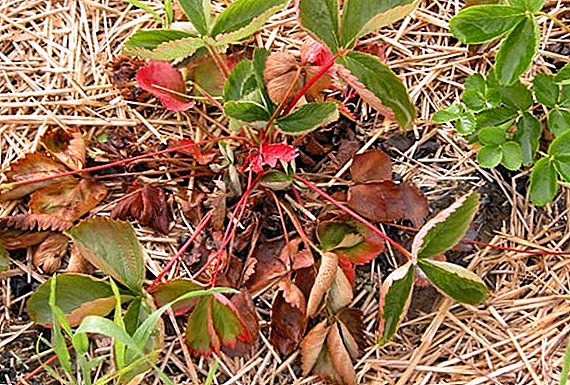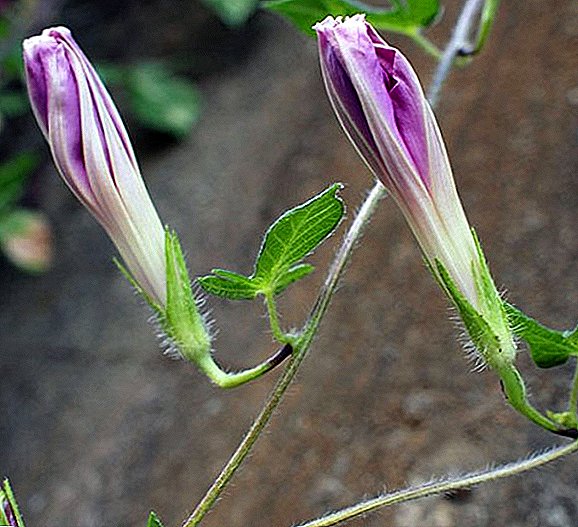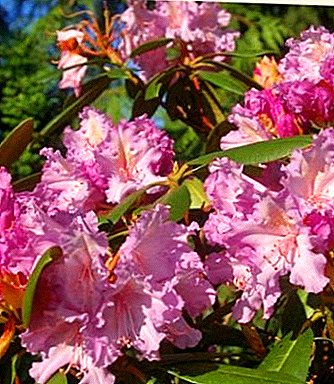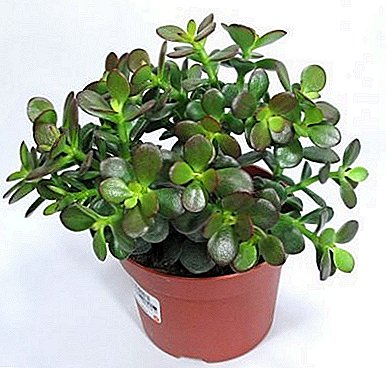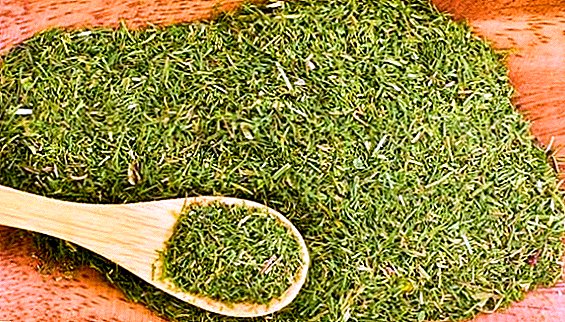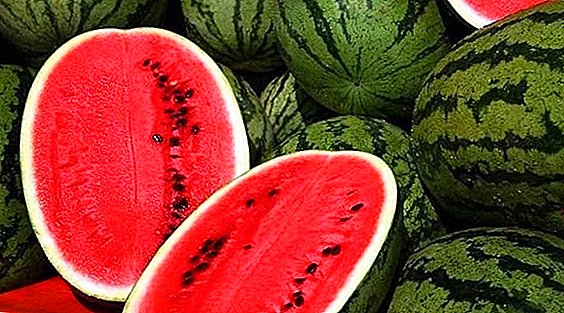
Privet (ligustrum) grows in nature in Ukraine, in the Crimea, in the Caucasus, in Moldova, as well as in North Africa, Iran, and East Asia.
Description
Ligustrum vulgare was bred in 1878. It differs from other types (and there are about 50 of them) by increased cold resistance (it withstands temperatures of 30 degrees Celsius), therefore feels well in a temperate climate zone. This is a beautiful and unpretentious woody shrub with dark green 6-centimeter leaves.
Bush grows volume and high (up to 5 meters). Him can be cut. Begins to bloom in July. Flowering ends in about 25 days. Inflorescences look like white caps and consist of many small flowers. Fruits are black, as if lacquered, drupes, do not fall for a very long time.
Attention! Ligustrum fruits are similar to cherry berries, but they are highly poisonous.
 Ligustrum vulgare f. Sempervirens - privet evergreen. Ligustrum vulgare Atrovirens has dark green leaves becoming brownish in autumn.
Ligustrum vulgare f. Sempervirens - privet evergreen. Ligustrum vulgare Atrovirens has dark green leaves becoming brownish in autumn.
It has white flowers, which eventually turn into shiny, drupes.
Not all ornamental kinds of ligustrum bloom. For example, Ligustrum vulgare Aureum (aurea) - privet golden common has leaves lanceolate or oval, golden brown, especially saturated, if grows in well-lit areas. Used to create hedges in the southern cities of Russia.
Inflorescences on it is not formed. Another non-flowering species is Ligustrum vulgare Glaucum. Bush grows low, like Aureum, maximum - meter, its leaves are oblong in shape, gray, on each there is a light border.
Views from the photo
In the genus of privet ordinary, there are more than 50 species of plants. They differ in the length of growth, shape and types (bushes, trees).
Privet primrose - the habitat is Russia, Ukraine, China, Japan. In some varieties can grow up to 4-5 meters. The leaves are oval. Unpretentious to the presence of sunlight. During the flowering period acquires white flowers. The most resistant to cold look, does not require coverage in the winter.
The following varieties of common privet have gained popularity:
- Aurea (round-leaved) - can not stand the cold, has a golden color of foliage. It grows up to one meter in height. Does not bloom.
- Ash-leaved maple is a non-flowering shrub reaching a height of 3-4 meters. Cold resistance is poor.
- Glaucum Albo-marginatum is a non-flowering shrub not exceeding one meter in height. The foliage is green and emerald with a silvery edging.
- Glaucum - gray foliage. Colorless
- Vicari - has a tightly seated crown. Height up to a meter, can not stand the wind. Foliage with a yellow tint, and in winter has a burgundy shade. The flowering period is summer.
You can visually get acquainted with common turquoise in the photo below:





Shiny (golden)
Shrub or tree up to 6 meters high. Flowering takes place in the summer and lasts about three months. Fruits are like currants, small, dark. It takes root in the fertile land, although it tolerates shadow well. Often used to create a hedge, due to its decorative appearance.
Japanese
It is close to brilliant, but grows more slowly and blooms less, but is shade tolerant. It grows up to 4 meters.
Variegated (chinese)
It grows up to two meters, suitable for growing hedges. Poor tolerates the absence of the sun. Leaves with a golden border, during flowering bears white flowers. It blooms late - to reach the age of three. With the help of fertilizers you can extend the flowering period.
Qihou
Shrub grows to two meters, blooms for a short time up to one and a half to two weeks, in July.
Amur
Shrub, requires shelter for the winter, because it does not tolerate cold. Fruits in early autumn.
Care rules
Next, we dwell on the stages of care for the shrubs.
Soil and light
The soil for growing a levystrum can be any, as well as light conditions. True, it develops faster in the sun and grows taller. BUT the soil is preferable weakly alkaline. Before the start of summer, the ground around the bush must be mulched.
Temperature
The marginal minus temperature that the bush maintains is -30 degrees Celsius.
Top dressing
In the spring, the soil around the bushes is dug up, and introduced into it complex mineral fertilizeras well as a mixture of lime and sand.
Ligustum feels bad on acidic soil. After 3 years, in the fall, a fertilizer containing potassium is applied, which helps the plant to tolerate frosts.
Pruning
Pruned bushes not only for decorative purposes. With the help of a secateur, diseased and broken branches are removed, not forgetting the processing of cuts with garden pitch.
Watering
Plant endures drought. Nevertheless, it is rarely necessary, but it is abundant (30 liters under a bush) to be watered if the periods between precipitation are long, especially when the shrub is actively growing.
Transfer
Transplanting is recommended in the springwhile the kidneys are sleeping.
Breeding
Dividing bush. Part of the plant along with the root system is cut off and transplanted to a new location.
Reproduction root shoots: they are excavated and separated from the parent plant.
Cuttings. It is usually produced in July if young cuttings are used. In June - if the twigs, harvested in the previous year, are planted.
 Cutting off with dropping a branch. To the ground bends a twig located on the ground itself. With the help of a needle, grooves are made on its bark.
Cutting off with dropping a branch. To the ground bends a twig located on the ground itself. With the help of a needle, grooves are made on its bark.
The branch is dropping: a hydrogel is placed under it to facilitate the process of care afterwards (when prikopka is done without a hydrogel, the branch should be watered regularly), and from above - sphagnum or moisture-saturated soil covered with film (so the moisture will not evaporate).
Part of the branch remains above ground. If its end began to grow, then the cutting is done correctly. Transplantation should be carried out in the spring of next year. The branch is cut off from the mother bush, a new bush is dug up and transplanted.
Lay-off without dropping. Early spring with a needle several times spend on the branch, leaving scratches on the bark.
Below the scratches is attached a film (polyethylene), in which water is poured with water, the film is fixed on a branch above the damaged area.
The seam can be taped. Over time, if you water the trunk, roots will appear in the package. At the end of August, when there are a lot of roots, a section of a branch with roots is sawn off, a film is removed from it, and a new bush is planted in the ground. If you leave the bag on the branch for the winter, you will not be able to overwinter the roots in it, since the polyethylene will freeze.
Seeds. Seeds are like grape seeds. Their soaked in water for 24 hours, adding to it stimulants, and then sown in the soil, consisting of sand and peat in the ratio of 1: 3. Next, you need a centimeter depth of seeds, watering and hiding the film.
At the end of the stratification, the seeds are germinated at a temperature of 18 - 24 degrees Celsius for 2 to 8 weeks.
Landing
The pit for planting a bush should be 0.4-0.65 meters deep (0.3 meters more than the roots of the plant) and 0.4-0.65 meters in
Growing at home or how to make bonsai
 Ligustum at home is grown in the form of bonsai, which entails careful care. Such a tree can be from 15 to 50 cm in height. For the cultivation of bonsai good are such varieties as: privet Japanese, Amur, Chinese, ordinary.
Ligustum at home is grown in the form of bonsai, which entails careful care. Such a tree can be from 15 to 50 cm in height. For the cultivation of bonsai good are such varieties as: privet Japanese, Amur, Chinese, ordinary.
Wire is used to create the mold, it is superimposed on the woody part of the tree. Under the wire is laid bark protection - raffia fibers. The applied "bandage" is left for 3 months.
In the spring you need to cut off weak or ugly branches, to shape the crown. Great damage - smear garden pitch. For foliage density, pinch the top of young plants several times.
Every two years, it is desirable to update the vast majority of the soil in the container, since the roots do not tolerate the transplant. It is necessary to replant a plant when the soil becomes dry, in order to avoid damages, then to plentifully to water. In order for the roots to grow in breadth, during transplantation, you need to trim the roots - leaving about 10-15 cm.
diameter.
If it is planned to plant a curb of shrubs, the depth and width of the trench should also be 0.4-0.65 meters. A distance of at least 30 cm is left between the bushes.
Water is poured into the pit, after its absorption 10 cm of rubble is put. A mixture of turf, peat, humus and 130 grams of fertilizer containing nitrogen, phosphorus and potassium is poured onto it, filling half the pit. A seedling is placed in the pit, its roots are straightened and poured on top of sod-peat-humus soil.
IMPORTANT! Bushes after planting watered at the root. In a month, during which it is necessary to regularly water seedlings, the soil around them is mulched with a 5-8 cm layer of peat.
Diseases and pests
 If the leaflets become noticeable brown border, it is necessary to fertilize the soil twice with potassium-containing fertilizer - after that the border disappears, since the plant’s nutrition will become full.
If the leaflets become noticeable brown border, it is necessary to fertilize the soil twice with potassium-containing fertilizer - after that the border disappears, since the plant’s nutrition will become full.
The solution is prepared as follows: 3 tbsp. Is diluted in 10 liters of water. spoons of potassium chloride and poured out under the shrub.
Due to the very cold and little snowy winter, the upper parts of the shoots may be damaged. Insecticide treatment helps to get rid of pests: aphids, spider mites, powdery mildew, caterpillars, weevils, worms, etc. Treatment with soapy water eliminates whitefly and smoked mold.
Application
To create a hedge, it is common to use layouts without dropping. This breeding method allows you to quickly get a lot of new plants. Haircut privet tolerates well. In winter, such a fence is thrown with snow. In the spring, it will melt itself; there is no need to speed up the process, scattering it.
Important: from the green fence of evergreen privet to other plants on the site, as well as to the plot of neighbors should be a distance of at least one and a half meters.
Privet privet is a shrub that is suitable for single planting, the formation of green hedges and borders.


